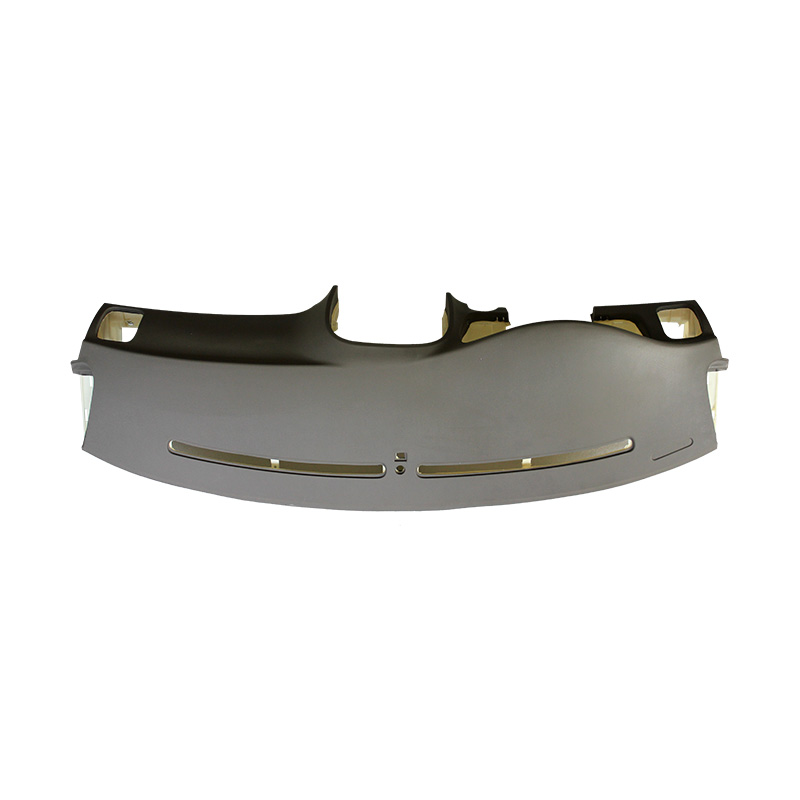2025-06-23
In the modern automotive landscape, safety is one of the top priorities for both drivers and vehicle manufacturers. While advanced driver-assistance systems (ADAS) and sensors play a crucial role in preventing accidents, the auto dashboard serves as the central hub that communicates vital information to the driver in real time. A well-designed dashboard not only enhances the driving experience but also significantly improves road safety by ensuring that critical data is presented clearly, accurately, and without delay.
1. Real-Time Monitoring of Vehicle Status
One of the primary functions of an auto dashboard is to provide real-time updates on the vehicle’s operating conditions. This includes speed, engine RPM, fuel level, coolant temperature, oil pressure, and battery status. By continuously displaying this information, the dashboard allows drivers to detect potential issues before they escalate into serious mechanical failures or safety hazards. For example, if the engine overheating warning appears, the driver can pull over immediately, preventing engine damage and possible roadside breakdowns.
2. Integration with Advanced Driver-Assistance Systems (ADAS)
Modern digital dashboards are increasingly integrated with ADAS technologies such as lane departure warnings, blind spot detection, forward collision alerts, and adaptive cruise control. These systems gather data from cameras, radar, and ultrasonic sensors, and the dashboard acts as the visual interface that presents these alerts to the driver. Visual cues, audible alarms, and even haptic feedback through steering wheel vibrations help ensure that drivers receive timely and intuitive warnings—greatly reducing the chances of collisions.
3. Customizable Displays for Enhanced Focus
Digital instrument clusters allow drivers to customize what information is displayed and how it's prioritized. For instance, during highway driving, a driver may prefer to see speed, navigation directions, and cruise control settings prominently. In contrast, off-road or city driving might require more visibility on surroundings via rearview camera feeds or parking assistance indicators. By tailoring the display to current driving conditions, the dashboard minimizes distractions and helps maintain focus on the road ahead.
4. Navigation and Route Guidance Integration
Integrated navigation systems within the dashboard eliminate the need for external devices like smartphones or GPS units, which can be distracting if used improperly. Real-time turn-by-turn navigation directly on the dashboard keeps the driver’s eyes on the road while still providing essential route guidance. Some systems even offer head-up displays (HUDs) that project key data onto the windshield, further reducing the need to glance away from the road.
5. Early Warning Systems and Diagnostics
Auto dashboards today are equipped with comprehensive diagnostic capabilities. If a system malfunction occurs—such as brake failure, tire pressure loss, or airbag readiness issues—the dashboard will immediately alert the driver using clear symbols and messages. This proactive approach ensures that safety-critical components remain functional and that any faults are addressed promptly.
6. Driver Behavior Feedback and Eco-Driving Assistance
Some advanced dashboards now include features that monitor and provide feedback on driving behavior. For example, eco-driving modes encourage smoother acceleration and braking, which not only conserves fuel but also reduces accident risk. Additionally, some systems can detect signs of drowsy driving—such as erratic steering or inconsistent speed—and issue alerts to remind the driver to take a break.
7. Connectivity for Emergency Response and Telematics
With the rise of connected cars, modern dashboards are often linked to telematics systems that enable automatic emergency calling (eCall), remote diagnostics, and location tracking. In the event of a crash, the dashboard can trigger an automatic call to emergency services, sending the vehicle’s exact location and other relevant data. This feature has already saved lives by significantly reducing response times in critical situations.
The auto dashboard has evolved far beyond its original purpose of simply showing speed and fuel levels. Today, it plays a central role in enhancing driving safety through real-time monitoring, integration with ADAS, customizable interfaces, and connectivity with smart systems. As vehicles become more autonomous and intelligent, the dashboard will continue to be a key interface between the driver and the car—ensuring that safety remains at the forefront of every journey.
